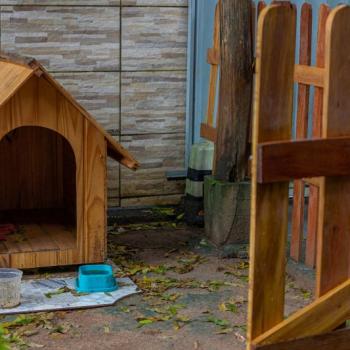Q: Does the storyteller, the one who went through the failure, often find new insights? Maybe the lesson wasn’t what he or she thought it was?
I would say every time — and we’ve had 54 storytellers.
If you ask people, “What would you like to share about an impactful fork in the road or struggle in your life?” everyone has something. They think about it, maybe for the first time in 10 years. So it’s almost like reopening a case file and looking at it with a new lens to say, “What did I actually do wrong? How did I feel during that? How did that affect other people?”
It’s been incredibly cathartic for almost all the storytellers. A lot of them say, “I absolutely needed to say this. I needed to be able to do this.”
It impacts the audience members, but it also impacts the people that are sharing.
Q: The Failure:Lab website talks about helping “pave the way for change by crushing the isolation and stigma around failure.” So what’s the role of failure in the process of change?
We’re living in times of exponential change that is massively affecting every part of our lives — home, work, how we communicate, business, government. All of it is changing so fast, and it’s kind of an adapt-or-die situation.
So we’re forced, whether we like it or not, to try new things. And ultimately, if you’re going to be trying a bunch of new things, then you’re going to be screwing up more than you were before.
At the same time, as we’re more digitally connected than ever, more and more people are becoming physically disconnected.
So those two things combined mean that in a lot of ways, all we’re looking at is digital veneers, pictures of people with their best face forward. We’re missing the sitting-around-the-campfire sharing of real stories. We’re missing that community. We’re missing the face-to-face.
Failure:Lab does an amazing job of bringing people together and really digging into some honest narrative. And that helps people to change — to remember that they’re not alone, to remember that a ton of other people are struggling.
It gives you hope when you see someone who looks so successful but the truth is, they’ve gone through all of these tough times just like you are. It encourages you to say, “All right! If they can overcome it, I can overcome it.”
In many ways, we’re exploring the difference between someone who goes through something and just quits and lies down versus someone who goes through something and gets back up, and continues to get back up.
That’s the crux of the change that we’re trying to create: to encourage people to keep going. In many ways, what Failure:Lab is about is resiliency. It’s not actually about failure. It’s that these people aren’t failures. They’re resilient individuals.
They have this attitude of not giving up. They’re willing to keep trying and be strong. They have this perception of, “You know what? I’m not a failure. This event was a failure, but I’m not a failure.”
Q: How did Failure:Lab start?
My friend Jordan O’Neil went to TEDx Detroit about four years ago now and heard a talk by a man named Randal Charlton, a wealthy businessman in his 70s.
Years ago, he’d moved to America from Europe with a dream of starting a restaurant and bar and had sunk his entire fortune into this. He ended up losing his business and all of his money. His wife left him. He got pneumonia. And then his daughter committed suicide.
He was raw and emotional [during the talk], and you could tell that it still hurt. And at the end, he wrapped it up by saying he eventually moved to Detroit and found a new purpose and moved on with his life.
The whole drive back to Grand Rapids, Jordan kept thinking about Randal’s talk and how it stood out because of the vulnerability and the honesty.
And Jordan thought, “What if we did an event that was just that? No bow at the end, no wrapping up. What if we just shared that?”
We talked about it for a while and wrote the format, a two-hour event with six speakers and music blended in. When we did the first event, we were terrified, because it had never been done that way with no lessons, and we didn’t know if it was going to be depressing — or if people were going to come.
And we ended up selling it out in advance, which made us even more terrified, because we’re like, “What if everyone comes and they all hate it?”
The first one was just phenomenal. It was just such a fun, amazing experience. And since then, we’ve done 10 events in three years in two countries and maybe eight cities. And yeah, it’s just been phenomenal.
Q: And as you said, this is a company; this is a business, right?
Yeah. We’re a [limited liability company] with three partners. We realized if we wanted to grow in the same way that TED did, then we can only organize so many events a year.
So about three or four months ago, we launched an independent license model. So now anyone anywhere can organize their own Failure:Lab. For a small license fee, you get access to all of our guidelines, our how-to’s, our branded documents, our program templates, poster templates, press-release templates. You get a page on our website.
Oddly enough, our first independent event was in Chandigarh, India. They organized it in three weeks and sold it out.
And we had this “Nemo” moment where, like, “My goodness! Our little idea was exported around the world.” And since then, we’ve just been growing.
We’ve also created a curriculum for organizations and companies (link is external), a course that allows people to explore what’s holding people back in their organization. What are they afraid of? Why are they not trying new things? Why are they not communicating well? Why is your environment not safe for innovation?
We’re really excited about this. A lot of the pushback that TED gets is that the seminars get everyone jazzed up for a day and then nothing happens.
That was what we wanted to solve. Like, “All right. We’re actually stirring things up in people, getting them to think. They’re opening some of the things from their past, looking at their pattern. We want to give them an ability to actually do some of this.”













